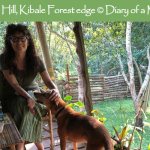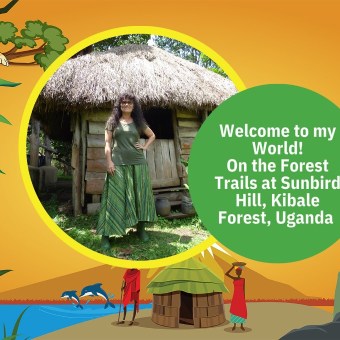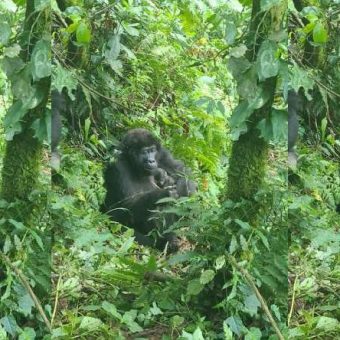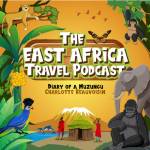Gorilla tracking – a typical day: what to expect
I shall never forget my first encounter with gorillas. Sound preceded sight. Odor preceded sound in the form of an overwhelming, musky-barnyard, humanlike scent. The air was suddenly rent by a high-pitched series of screams followed by the rhythmic rondo of sharp pok-pok chestbeats from a great silverbacked male obscured behind what seemed an impenetrable wall of vegetation.
Dian Fossey in Gorillas in the Mist (1983) describing her 1963 trip to Kabara. (The screams and chest-beating were of alarm, not ferocity.)
Part of the excitement of tracking the gorillas is wondering exactly where you will find them! As their name suggests, Mountain gorillas live at high altitude. The dense jungle, altitude and muddy terrain can be tiring and some visitors may find the tracking very challenging. Keep your own pace and drink plenty of water. Avoid getting dehydrated.
After early breakfast, your lodge should provide you with a packed lunch and plenty of drinking water. (Check that the packed lunch has been organised when you retire to bed the night before you track). Even if the weather looks fine before you embark on your hike, the higher you get, the more it rains (so don’t forget your rain gear!)
The once in a lifetime gorilla tracking experience starts with an early morning briefing, around 7.30 to 8 AM depending where you are tracking. You will be reminded of the Gorilla Trekking Rules, in place to protect the gorillas and their precious habitat. One of the main rules is that if you are feeling ill, you are obliged to advise the authorities. They will decide whether you are healthy enough to trek. Remember that the health of the critically endangered gorillas is more important than your holiday: a cold or the flu can be fatal to a gorilla.
After your briefing, you will have the opportunity to hire a porter for the day. Highly recommended!
Although one family is sometimes found very near to the start of the gorilla tracking in Uganda, generally you will walk for an hour or more before you find the gorillas. The countryside is incredibly beautiful. For me, the trek is a wonderful part of the whole experience.
Radio contact between the wildlife rangers and information from the previous day’s gorilla sightings make it possible for the rangers to guide you to the right place to find the gorillas.
As you come within range, the rangers will ask you to leave your bags and non-essentials so you can approach the gorillas more closely, cameras at the ready. Take time to simply enjoy the presence of these amazing animals. Do come out from behind the camera lens occasionally.
Immediately I was struck by the physical magnificence of the huge jet-black bodies blended against the green palette wash of the thick forest foliage.
Dian Fossey, Gorillas in the Mist
You will spend an hour with the gorillas, during which time they may be munching on bamboo, hanging from the trees above your head, grooming each other, suckling their babies, playing, sleeping, farting or even having sex! You just never know what to expect.
One of the most important Gorilla Trekking Rules is to keep a distance of seven metres from the gorillas. There’s no guarantee that the gorillas will stick to this however! You will often move around the forest while you are with them. If they approach you, the rangers will ask you to step back. Equally if they walk into the forest, you may be allowed to follow them a little way. Sometimes you will see the gorillas in a light clearing. At other times they will be in dark forest. You need to bear this in mind if you’re planning to take a lot of photos. Bring fast film, if you’re shooting film. Regardless of what type of camera you have, you must always make sure the flash is switched off.
The route back to the park headquarters is often shorter, although some tracks may involve you climbing back uphill in places.
Back at base in Uganda, you will be given your gorilla trekking certificate. Bragging rights, yeah!
(Rwanda used to issue paper certificates too and may offer some similar recognition again in the future. In 2018, RDB were giving trackers beautiful presentation boxes of tea or coffee – Rwandese of course).
The UWA and RDB conservation ranger guides are very knowledgeable and will take good care of you while you are in the forest. These ranger guys (and occasionally girls) will help you negotiate sometimes steep and often muddy ground too. Whether you have questions about the gorillas, or about the wildlife, birds and plants of the forest, feel free to ask. The guides know each gorilla family intimately and can tell you the names and habits of each family member. There is so much to learn about these fascinating and humble primates.
Tips for the rangers are discretionary but very much appreciated. Estimate $15-20 per tracker/ranger. Tips should be in small US dollar bills (dated post-2006) or local currency (Uganda shillings or Rwandese francs, depending on which country you are trekking in).
What to expect on your gorilla tracking adventure. How your day starts in Uganda
Gorilla tracking registration and briefing take place at the Uganda Wildlife Authority park offices from 7.45 am and tracking usually starts at 8.30 am. It is here that you will be given the name of the specific gorilla family you are tracking. Some gorilla families are easier to track than others; it all depends at what altitude they range, or what distance they cover during the day. It normally takes 1 to 3 hours tracking time (each way) to find your gorilla family. If you’re fit, pushing through the dense jungle of Bwindi Impenetrable Forest, with a ranger hacking through the occasional branch with his machete in front of you, can be quite an adventure! I LOVE IT!
What to expect on your gorilla tracking adventure. How your day starts in Rwanda
Tea and coffee are provided from around 7.00 am for gorilla tracking visitors assembled in Kinigi, where entertainment was once provided by the traditional Intore dancers from SACOLA (Sabyinyo Community Livelihoods Association). In 2018, entertainment was provided by a large TV screen showing happy trackers. (Bring back the dancers, I say!)
In Rwanda, your gorilla family will be assigned to you at the early morning briefing. The fitter (and more willing!) you are, the more likely you are to be allocated a gorilla family that involves a longer trek. The rangers assess you according to your health, general fitness, age and interests.
You can opt for a short hike (of between 30 minutes to an hour), a medium one (from one hour to three hours) or a longer hike to the large Susa group, which may take the whole day.
Gorilla tracking in Rwanda generally starts with a 45 minute walk up gently sloping farmland. The backdrop of the volcanoes is spectacular and the air is pure. As you approach the park entrance, the ground becomes steeper and thick with bamboo.
Depending on the group you are with, your total tracking time will take 30 minutes to four hours (in either direction). Generally, gorilla tracking is less strenuous in Rwanda than in Uganda.
For gorilla tracking stories and Uganda and Rwanda travel advice, click on the hyperlinks in the Ultimate Guide to Mountain Gorilla Tracking. Looking for more info? Check out my Travel Directory or Contact the Muzungu.




























